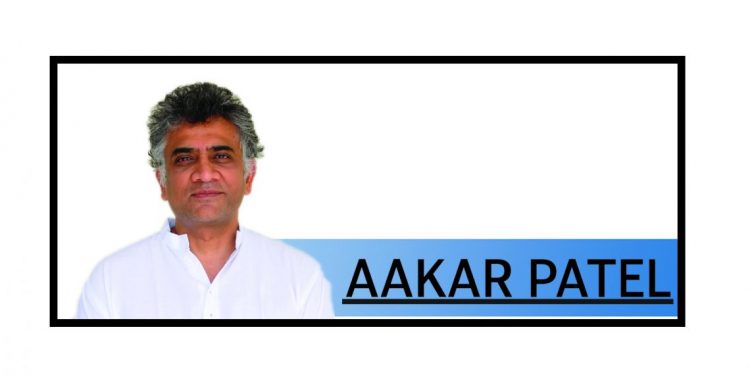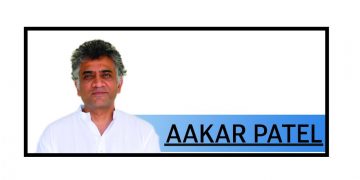The Doomsday Clock is a visual tool designed to warn the public about how close humans are to destroying our world with dangerous technologies. The time on the clock is set by experts to reflect how far away from annihilation (midnight) we are, and if it is accurate, we are currently the closest we have ever been to the end.
The clock was created in 1947, the year of India’s independence, when the great global threat was of course that of nuclear weapons. The bombs had gone off over Nagasaki and Hiroshima only two years before that, and the Soviets were developing their own nuclear weapons. They achieved this capability in 1949, then the United Kingdom went nuclear in 1952, France in 1960 and China in 1964.
India weaponised its programme in 1974, and then in the 1990s Pakistan also demonstrated its capability. Israel and North Korea are understood to have the weapons and it is likely only a matter of time before Iran acquires them.
In the 1980s, when I was a student in the United States, the most important related element was something called the Strategic Defence Initiative, nicknamed Star Wars. Under it the Ronald Reagan administration was developing a system that would allow the US to shoot down incoming missiles while retaining its own offensive capability. This likely sent the Doomsday Clock forward.
After the Soviet Union perished, the Doomsday Clock was moved back to 17 minutes to midnight in 1991, the farthest it has ever been. The threat of nuclear weapons appeared to have abated to a large extent. At least this was how the news reported it. There were many more reports, analysis, civil society groups (like Pugwash) then and more activism on nuclear weapons before 1991 than is visible today.
Currently the setters of the clock according to its website are 18 individuals, including three of South Asian origin (one is a professor at IIT, Delhi).
Two decades ago, the Doomsday Clock had begun to include other threats, including climate change and now it has to accommodate further new ones, like artificial intelligence. Humankind is accelerating the invention all sorts of new ways to destroy itself.
At the beginning of this year, on 28 January, they posted the following justification for concluding that in 2025 we were closer to annihilation than in 1947.
“Closer than ever: It is now 89 seconds to midnight. In 2024, humanity edged ever closer to catastrophe. Trends that have deeply concerned the Science and Security Board continued, and despite unmistakable signs of danger, national leaders and their societies have failed to do what is needed to change course. Consequently, we now move the Doomsday Clock from 90 seconds to 89 seconds to midnight — the closest it has ever been to catastrophe. Our fervent hope is that leaders will recognize the world’s existential predicament and take bold action to reduce the threats posed by nuclear weapons, climate change, and the potential misuse of biological science and a variety of emerging technologies.”
Since that day in January, much has happened. A drone attack on Russian air bases, taking out a chunk of its most valuable air assets, escalated the Ukraine war. The Israeli genocide in Gaza has continued and now its government is starving the Palestinians, with open conflicts against nations as close as Lebanon and as far away as Yemen. The United States has come under the guardianship of a particularly unpredictable leader. The tension the US has built up against China on matters ranging from trade to Taiwan have escalated. And of course only a few weeks ago India fought in a conflict that the US president repeatedly claims was in danger of going nuclear.
And to all of the above we must add the threats from the impact of climate change and artificial intelligence. In the second of these areas, things are proceeding at such a rapid pace that there is no real understanding of how near the threat is, or even of how what the nature of the danger will be. Those closest to the technology are both the most fearful (in this case the academics) and the most dismissive (if they happen to be corporations profiting from the development of AI) and so it is not easy for us on the outside to judge.
In any case, given that this is now a race in the corporate sectors of the US and China as opposed to the state-managed nuclear arms race, it is likely impossible to control. We will know whether the end result is disaster or windfall if and when it arrives. The role of AI in disinformation on social media and in military applications such as drones already gives us hints that the bad is likely to outweigh the good.
Notice that we have not even discussed the possibility of another pandemic. Or the chaos and turbulence that will come soon in a world containing a handful of trillionaires and billions of those who are poor.
The Doomsday Clock seeks to raise awareness and encourage action to reduce existential risks. But in my opinion it largely fails in this task. If we consider what sort of news is consumed nightly around the world, including in India, we can conclude that mankind is more troubled by other events. To some these events might be trivial in comparison with the far graver things that we are sliding the planet into. However we must concede that they are important enough for most of mankind to be kept entertained while the clock is ticking.
By Aakar Patel






































